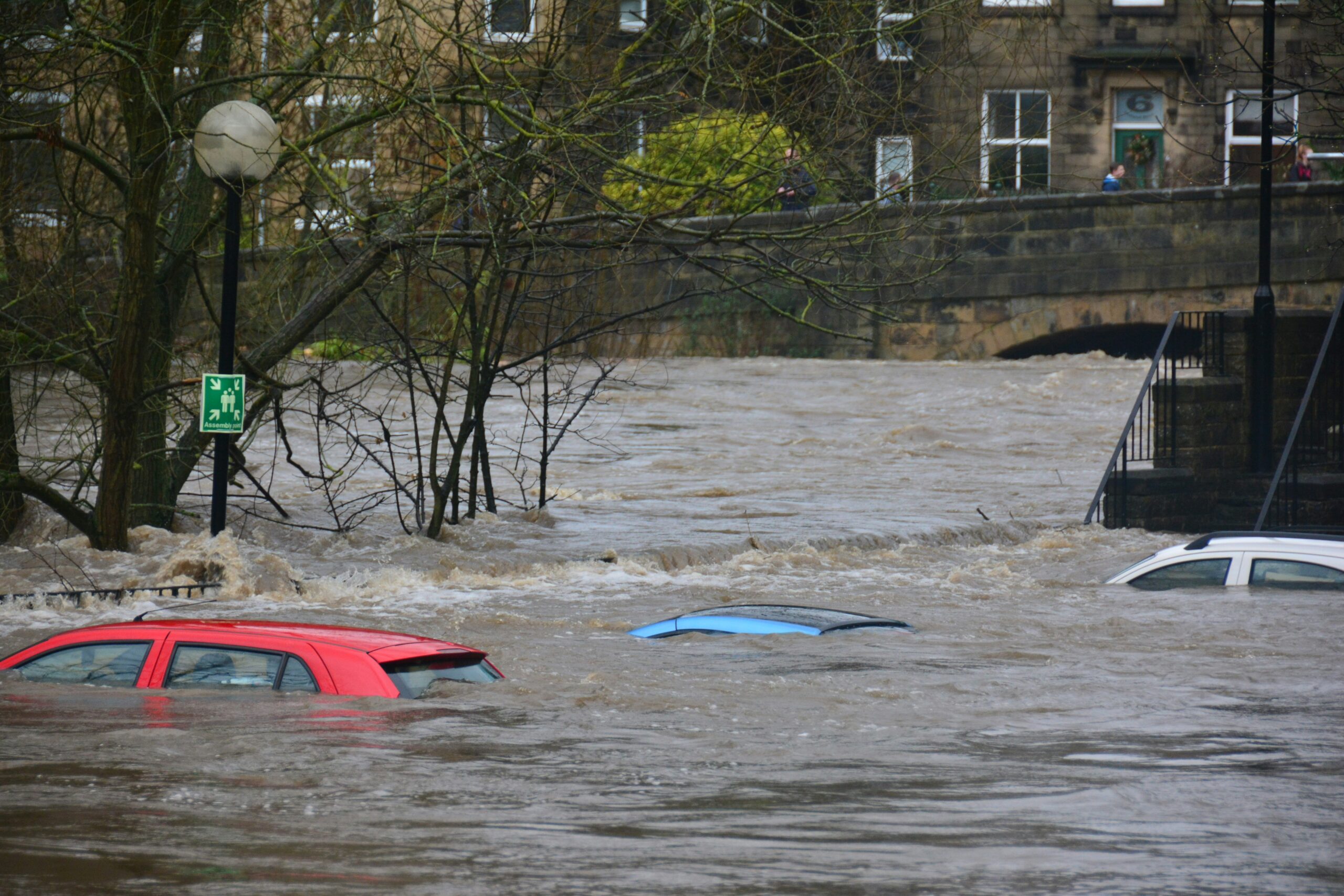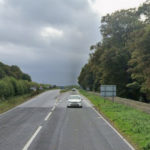On Independence Day, an early morning storm in south-central Texas struck in darkness. The swelling of the Guadalupe River came swiftly. Depending on where along the banks you were, the waters rose nearly 30 feet in less than an hour. The flooding killed more than 130 people, including at least 37 children.
The rural terrain of Texas Hill Country, where the fatal flooding occurred, is sloping and steep. “It’s essentially a funnel,” Arsum Pathak, director of adaptation and climate resilience at the National Wildlife Federation, told NPQ. The rain rushed down the hills, the river rose, and the flooding ferried away cars, trees, homes, and campers.
Ten days later, a flash flood during the evening rush hour inundated the New York-New Jersey metropolitan area. Subway passengers were stuck in train cars in New York as waters gushed from stations, a subway sewer drain shot up water like a geyser, and a car in Plainfield, NJ, was swept into a brook, killing two people. By the end of July, another flash flood drenched the region, prompting states of emergency in both New York and New Jersey.
A season synonymous with relaxation, summers are instead quickly becoming a time of climate severity. In 2025, the New York-New Jersey metro area and Texas have already felt the ferocity of extreme weather.
“Every summer is getting worse than the last,” said Pathak. As the planet gets warmer, severe weather, including flash floods, will only get more intense.
The echoes of these two floods showed that even with years of documentation of heavy rain, through maps, archives, oral histories, and community anecdotes, cities are still getting caught off guard when it comes to keeping residents safe. Still, there are lessons to be learned about climate mitigation, resiliency, and how to stay as safe as possible.
The floods in Texas Hill County, often referred to as Flash Flood Alley, struck in the wee hours. Though the state mobilized rescue teams and the National Weather Service warned of the high water to come, local government didn’t issue a warning until Sunday, two days after the floods. Many residents and campers said they didn’t realize floods were coming until they were already there.
A season synonymous with relaxation, summers are instead quickly becoming a time of climate severity.
Nick Nyhan, a New Yorker, had many questions after Texas, including why Flash Flood Alley doesn’t have a better warning system. Even after a Memorial Day flood killed more than 20 people in the area in 2015, state and local agencies stumbled to secure $1 million for a plan that would’ve included better flood warnings. That included Kerr County—where most of the flood victims came from—which had applied for but was denied federal funds by Texas officials responsible for doling out the funds.
“I don’t think we have that problem in New York City,” Nyhan said about residents not being warned in time. Between local news, emergency alerts, neighborhood WhatsApp groups, and other ways to keep track of the weather, many New Yorkers are aware when a flood from heavy rain is imminent. The city is no stranger to fatal disasters. In 2021, rain from Hurricane Ida killed 13 people in the city, many in basements. More and more, New Yorkers are becoming anxious about looming storms.
Nyhan is also the founder of The City Sponge, a newsletter and website about flooding that informs New Yorkers about how to protect themselves. Posts include a checklist on what to do three hours before a flood (clearing catch basins and drains, signing up for city alerts, and creating makeshift barriers to block water from flooding basements are among the few tips).
But even if New Yorkers know a flood is coming, there is not much to be done once the water arrives. And the aftermath can still cause damage and death. In some cases, residents are even left with the bills to fix the damage left behind.
Water from Above, Water from Below
Anne Nelson, a retired clerk, has lived in her Queens, NY, home for nearly half a century. A retired clerk, she bought the house in 1980 but said she only experienced flooding for the first time five years ago. At that time, a family member was living there and, ultimately, was forced to move out, she explains in an interview with NPQ.
Nelson tapped into her savings to make repairs to prevent the water from cascading into her basement. But she’s afraid a day will come when the water will be so high that it traps her in her home.
Subscribe to NPQ’s newsletters to have our top stories delivered directly to your inbox.
By signing up, you agree to our privacy policy and terms of use, and to receive messages from NPQ and our partners.
In Nelson’s neighborhood of southeast Queens, residents are not only at risk of flash floods but also groundwater flooding from below, and for some on the coast or near wetlands, tidal flooding, which is the temporary inundation of low-lying areas.
Even though Nelson has made home repairs to stay safe, the area in front of her home can still cause health hazards, such as standing water.
Nelson is among many residents across the county who are learning to live with more water with each passing year.
Anna Weber, a senior policy analyst at the Natural Resources Defense Council, conducts research that includes analyzing the number of buildings under the National Flood Insurance Program that have flooded multiple times across the United States. Gulf states, as well as the states along the Eastern Seaboard, account for the most.
“What we’ve seen consistently is that we are adding more properties to this list of repeatedly flooded homes faster than we’re reducing risk by mitigating that flood hazard,” Weber told NPQ.
The echoes of these two floods showed that even with years of documentation of heavy rain…cities are still getting caught off guard when it comes to keeping residents safe.
Whether in rural Texas or the dense New York metro area, Weber said that it’s time to get smart about where development happens. She added that in both Texas Hill County and the New York area, many buildings were constructed before the country drew flood maps.
“However, in both Texas and New York, there are areas that have seen newer development, and this is where we can start thinking about making good decisions about how and where we build,” said Weber.
Some coastal cities across the country have invested in sea walls and flood gates, but, while helpful, this doesn’t quite meet the mark.
“Much of our disaster recovery system is very reactive,” said Pathak.
For policy advocates like her, true resiliency also means investing in nature-based solutions. Pathak pointed to New York’s Bluebelt Program, which naturally drains stormwater into streams, ponds, and wetlands, as well as the planting of living marsh shorelines in Texas to prevent erosion, which was implemented after Hurricane Harvey in 2017.
At the community level, Nyhan is working on an AI-powered chatbot called FloodChat to help renters stay safe by providing them with information about flooding and tenants’ rights in a dozen languages. The app is aimed at the more than two million renters in the city, including basement dwellers.
Nelson, the Queens homeowner, said that staying connected to her community through her senior center and civic organization has helped her navigate resources to help with flooding.
Whether neighborhood solutions or federal funding, large-scale investment in infrastructure, cities, counties, and states will have to be prepared for the destructive effects of flooding and other climate disasters. Although those affected hope the government gets out of the reactive nature to floods to keep residents safe.
“Everybody pays attention when it’s happening,” said Nyhan. “But I think the challenge is how do you help people pay attention when it’s not flooding.”
Roxanne L. Scott is a journalist and audio producer in Southeast Queens. She writes about health, climate, and the environment. Her work has been published in the New York Amsterdam News, City Limits, and Scientific American. She teaches at The City University of New York’s Graduate School of Journalism.
Journalism, nonprofits, and multiracial democracy are under attack. At NPQ, we fight back by sharing stories and essential insights from nonprofit leaders and workers—and we pay every contributor.
Your support keeps truth alive when it matters most.
Every single dollar makes a difference.
Advanced QuickBooks for Nonprofits
Expert Guidance for Experienced QuickBooks Users
Powerful Branding for Social Change in a Time of Disruption
Subscribe to the NPQ newsletter to have our top stories delivered directly to your inbox.
By signing up, you agree to our privacy policy and terms of use, and to receive messages from NPQ and our partners.
We are using cookies to give you the best experience on our website.
This website uses cookies so that we can provide you with the best user experience possible. Cookie information is stored in your browser and performs functions such as recognising you when you return to our website and helping our team to understand which sections of the website you find most interesting and useful.
Strictly Necessary Cookie should be enabled at all times so that we can save your preferences for cookie settings.












